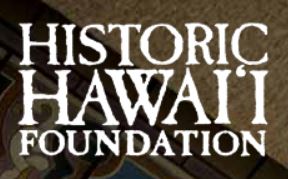 At long last, Keith and I were able to spend enough time in Honolulu to take advantage of something we’d wanted to do for decades. Not precisely one of these so called bucket list items, but something nevertheless we felt the poorer for not participating. Specifically, it was a series of lectures, running annually for 30 years, sponsored by the Historic Hawaii Foundation, and covering heritage subjects with a particular emphasis on Hawaii. Kudos to the persistence of the Historic Hawaii Foundation for making this all happen, with the long time assistance of the redoubtable Dr William Chapman, the chair of the American Studies program at the University of Hawaii, Manoa campus.
At long last, Keith and I were able to spend enough time in Honolulu to take advantage of something we’d wanted to do for decades. Not precisely one of these so called bucket list items, but something nevertheless we felt the poorer for not participating. Specifically, it was a series of lectures, running annually for 30 years, sponsored by the Historic Hawaii Foundation, and covering heritage subjects with a particular emphasis on Hawaii. Kudos to the persistence of the Historic Hawaii Foundation for making this all happen, with the long time assistance of the redoubtable Dr William Chapman, the chair of the American Studies program at the University of Hawaii, Manoa campus.
It is something of an irony that, with so many people who support the heritage industry, not only with their money but with their visits to heritage sites and attendance at lectures, of the shall we say graying generation, those who operate and curate the heritage industry are very, very young. Consequently, there is a bit of a disconnect, beyond the one wrought simply by age. Museum and heritage studies programs turn out graduates who are imbued with contemporary ideas about museology that then are spewed back, and heard while scratching their heads, by museum and heritage site visitors.
Mind you, a bit of revisionism is appropriate given that there still exist pervasive notions about culture being the exclusive province of northwestern Europe, and the northeast of the United States. History is, after all, written by the victors whether on the fields of battle or halls of academia. Still and all, sometimes, as Freud had it, a cigar is just a cigar.
Case in point, with one of the lectures focused on the Hawaiian Mission Houses, we were treated to a generic discussion by the outgoing director on changes in historiography over the last century. Mystifying at first, but then his point brought vaguely into focus when he asked those assembled whether, by show of hands, we thought the missionaries to Hawaii were colonists or imperialists.
As the lecture itself was so disjointed and so discomfited my own thoughts, I didn’t have the presence of mind to ask the lecturer if mightn’t the missionaries have been just that- missionaries. In his final remarks, the director asked again by show of hands if he hadn’t convinced us the missionaries were cultural imperialists. Were they? Were there proto-Maoists operating at the time of the Great Awakening in the early years of the 19th century? Or more likely, was the director in his lecture mouthing an extreme cultural anachronism? I would strongly stump for the latter.
No question about it, heritage sites and arts and cultural institutions generally, and internationally, are on hard times, with declining attendance and an increasing paucity of revenue that stimulates their governing bodies and administration to flail wildly for programs and approaches to make their institutions relevant to a younger audience. In this age of the handheld device and million channel interactive TV, anything outside electronic entertainment has a tough row to hoe. Still and all, it is imperative to mediate, to use a term current in museology, between the contemporary methodologies that are shall we say fashionable at the moment, and the familiar, traditional, canonical functions that are embraced by the traditional attendees and supporters. While of course one wants to educate and challenge the intellects of everyone, it would be wise to remember that entertainment is what most people are after, including that elusive younger attendee, so it would be equally wise to bear in mind that sometimes a cigar is just a cigar.
